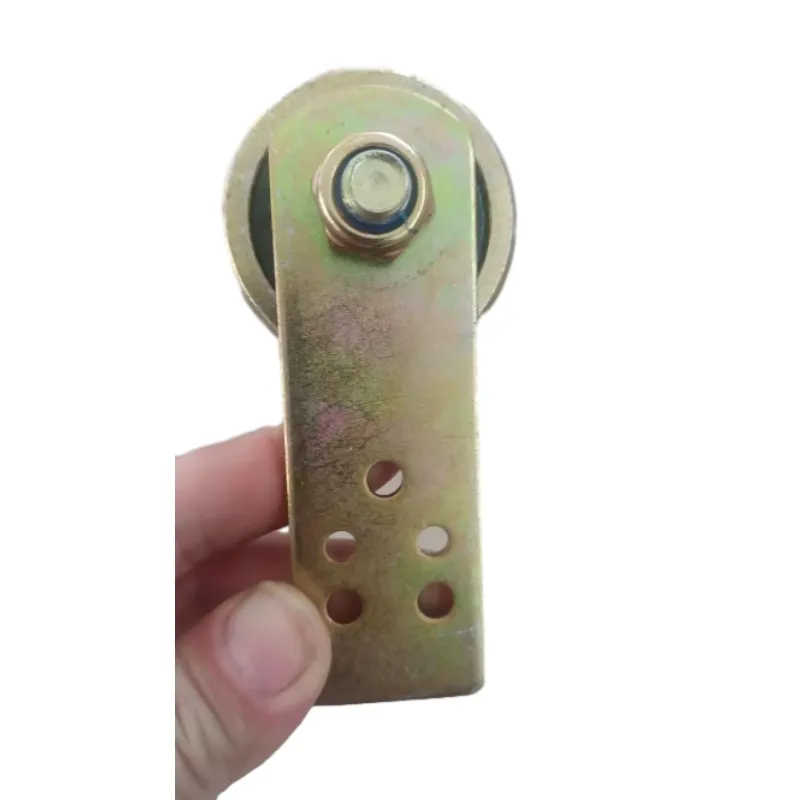
Nov . 15, 2024 10:45 Back to list
four point contact bearing
Four Point Contact Bearings Essential Insights and Applications
When it comes to the world of engineering and machinery, bearings play a vital role in the smooth operation of moving parts. Among various types of bearings, four point contact bearings stand out due to their unique design and functionality. This article delves into the characteristics, advantages, and applications of four point contact bearings, providing a comprehensive overview of their significance in industrial applications.
Understanding Four Point Contact Bearings
Four point contact bearings are a type of angular contact bearing that is designed to accommodate both axial and radial loads. Unlike standard ball bearings, which typically have two contact points, four point contact bearings feature four separate points of contact between the balls and the raceways. This configuration allows them to handle complex loading scenarios, making them well-suited for applications where space is constrained or where loads may vary significantly.
In essence, a four point contact bearing comprises a raceway with two grooves, ensuring that the balls fit securely and permit precise movement. The design allows for a single row of balls to bear the load, which enables the bearing to maintain a compact profile while providing robust performance.
Advantages of Four Point Contact Bearings
One of the primary advantages of four point contact bearings is their ability to support both axial and radial loads, which eliminates the need for separate bearings for these two functions
. This dual capability simplifies machine design and can lead to cost savings in both manufacturing and maintenance.Additionally, four point contact bearings offer enhanced stiffness and load distribution due to their unique point contact arrangement. This stiffness is particularly crucial in applications requiring precise positioning, such as machine tools and robotics. Moreover, their compact size aids in reducing the overall weight of applications, which can be particularly beneficial in aerospace and automotive industries.
four point contact bearing

Another advantage is the reduced friction between moving parts, resulting in improved efficiency and longevity. The design minimizes wear and tear, thereby extending the service life of the bearing and the machinery it supports. This reliability ensures consistent performance in critical applications where downtime can be costly.
Applications of Four Point Contact Bearings
The versatility of four point contact bearings makes them suitable for a wide array of applications. One prominent use is in the aerospace sector, where they support various mechanisms in aircraft and spacecraft. Their ability to handle both high-speed and heavy-load operations is essential in this industry.
In the realm of robotics, four point contact bearings are often employed in robotic arms and precision instruments. The accurate load handling and reduced backlash provided by these bearings ensure that robotic movements are smooth and reliable, crucial for applications such as assembly lines and surgical robots.
Furthermore, four point contact bearings are commonly found in industrial machinery, including CNC machines, printing presses, and conveyor systems. Their capability to manage complex loading patterns while maintaining high-speed performance makes them ideal for these applications.
Conclusion
In conclusion, four point contact bearings are an indispensable innovation in the field of mechanical engineering. Their unique design, which allows for handling both axial and radial loads, coupled with advantages such as reduced friction and enhanced durability, makes them a preferred choice in various industries. As technology advances and demands for precision and efficiency increase, the significance of four point contact bearings will undoubtedly continue to rise, ensuring their role as a fundamental component in modern machinery.
Latest news
-
Premium Deep Groove Ball Bearings | High Speed & Reliability
NewsAug.29,2025
-
Durable Scaffolding Clamps - Secure & Reliable Tube Connectors
NewsAug.28,2025
-
Common Failures in Thrust Ball Bearings and Solutions
NewsAug.22,2025
-
How Tapered Roller Bearings Can Take Shock Loads
NewsAug.22,2025
-
Angular Bearings in High-Precision Spindles
NewsAug.22,2025
-
The Impact of Misalignment on Cylindrical Roller Bearing Performance
NewsAug.22,2025
